Affiliate links on Android Authority may earn us a commission. Learn more.
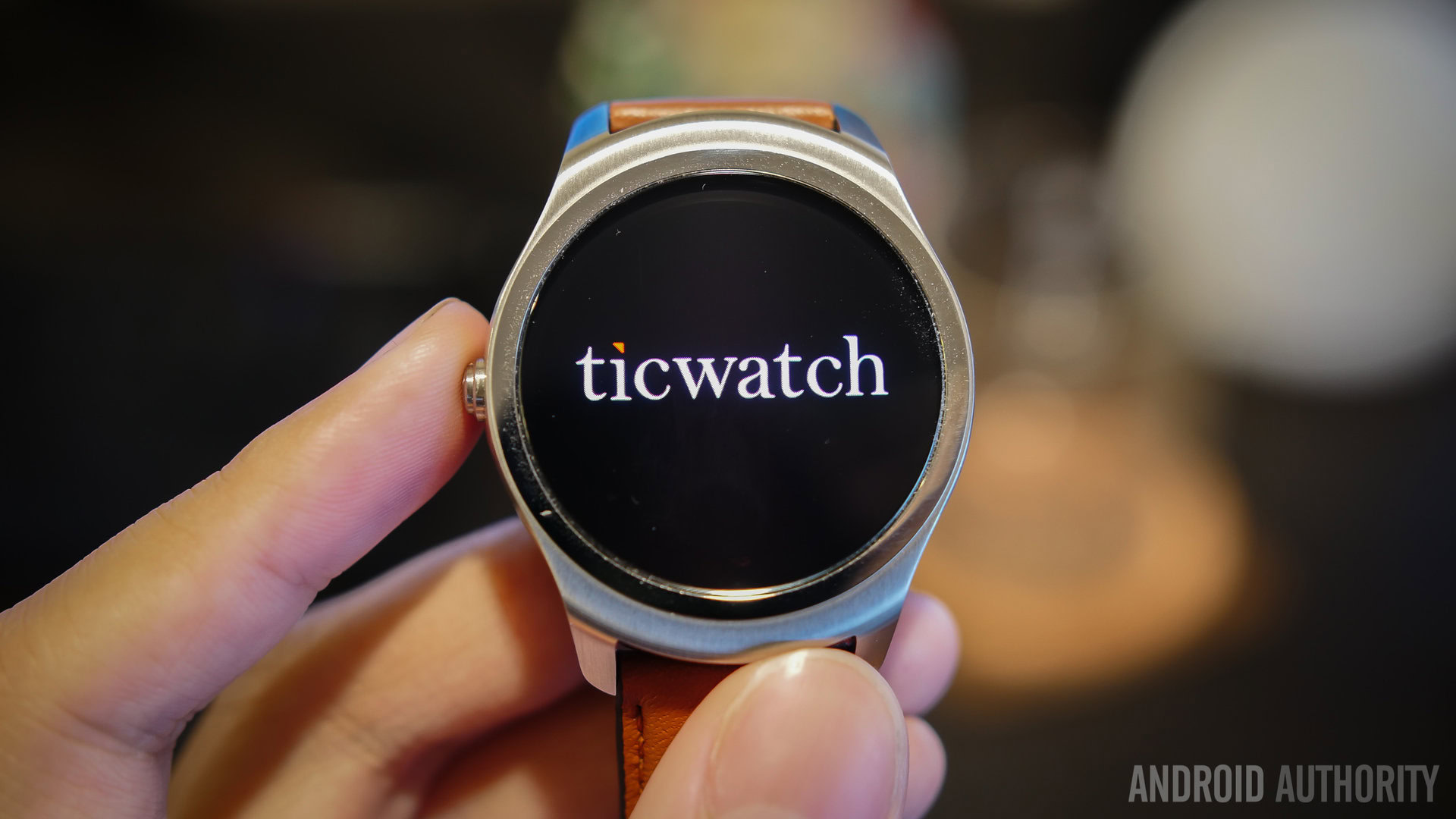
Ticwear TicWatch 2
What we like
What we don't like
Our scores
Ticwear TicWatch 2
In the world of smartwatches, Android Wear and the Apple Watch tend to be king. Despite the efforts of Samsung and their Tizen powered wearables, we have few other third parties that actually make a splash and end up on users’ wrists. Especially with the recent loss of Pebble in the market. They do still exist, however, and one that we are looking at here is a successful Kickstarter device that tries to marry premium features with a not-so-premium price. Does this smartwatch actually tickle our fancy? Let’s find out in this review of the Ticwatch 2.
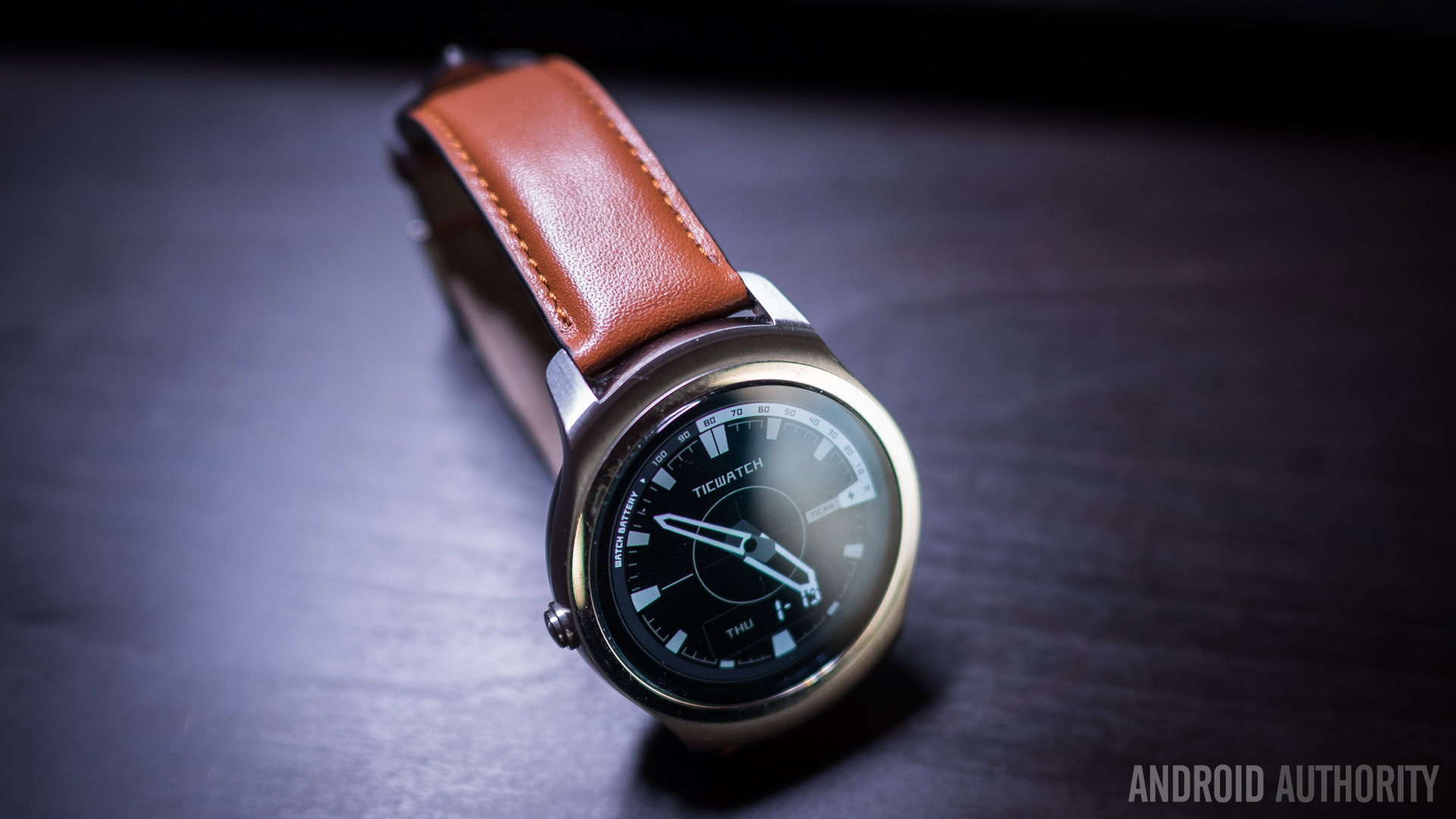
Despite all that makes this smartwatch different, there is plenty that is familiar. The Ticwatch 2 is very display forward, putting its 1.4 inch OLED display as the bulk of the watch’s face. There are a few different versions available but the one we are working with is the Oak edition, sporting a stainless steel construction and a nice brown leather band that fits right into the standard 20mm lugs on either end of the body.
On the back side is the heart rate sensor that can be used at will or during workouts when using the watch on the go. Notice that there are no charging contacts on the back – this is because the Ticwatch 2 uses wireless charging, of which can be done via two different charging docks. The one that comes with this Ticwatch is flat and relies heavily on the magnet to keep it in place, as it is pretty easy to make it move when it is sitting on the charger.
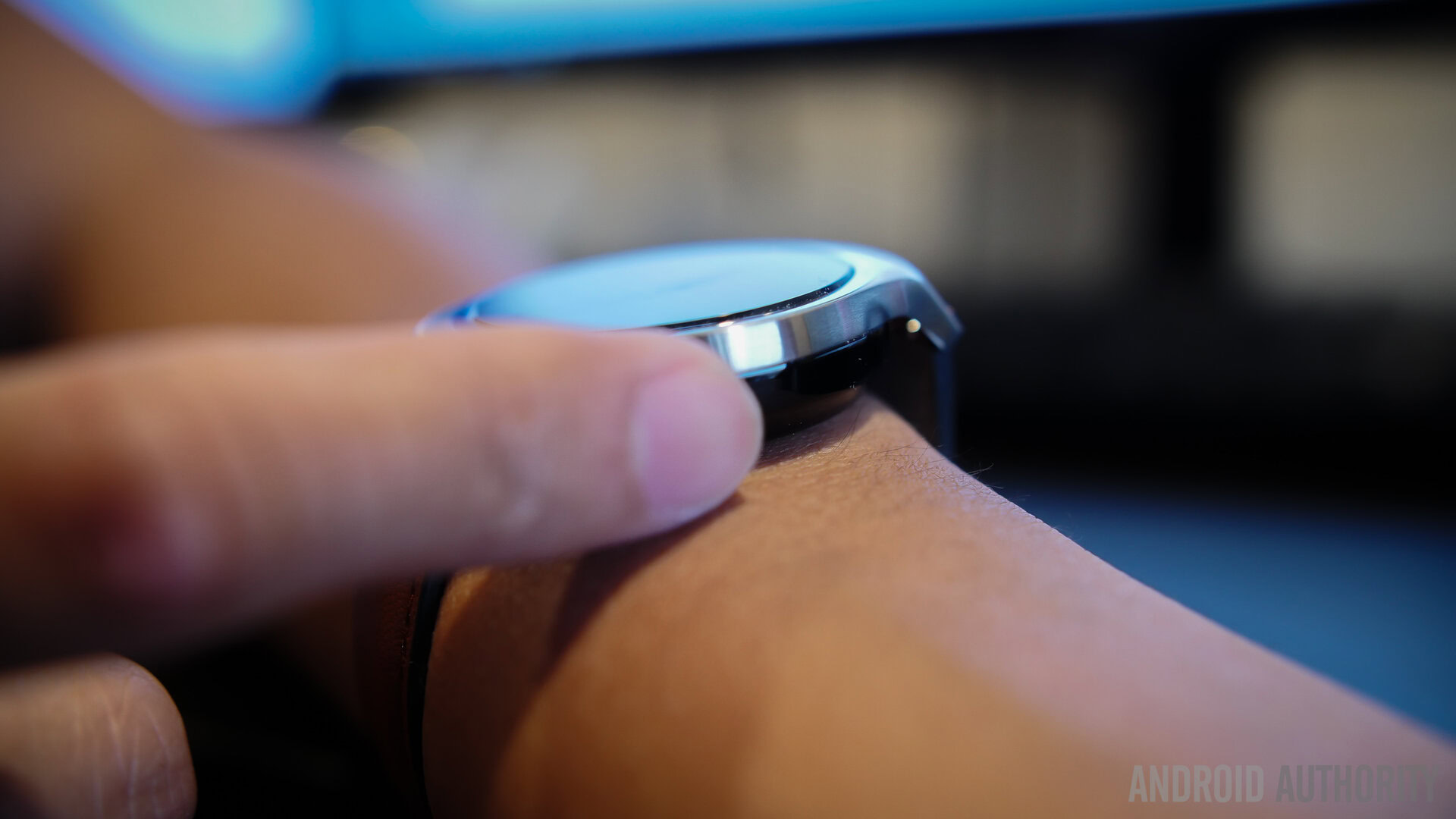
You might notice that the crown is in a different spot than other smartwatches or even watches in general – that is because its location on the left allows for the touch-sensitive area on the right to be open for ‘tickling.’ Touching on the right side yields a different form of navigation, and it works pretty well despite some sensitivity issues. It doesn’t seem to respond as consistently as we would like, compared to just touching right on the screen itself. However, after a couple of swipes up and down the rhythm and pressure required is easy to acquire – even better, you’re scrolling through the operating system without covering anything. What’s nice is that in the Ticwear settings the effective location of the crown can be changed if that is better for the user.
The only place that we can feel a little differently about the Ticwatch 2 quality is in the weight of the body, as it feels a bit lighter than other wearables that are similar in dimension. That doesn’t take away from the fact that this watch definitely sports its lower price in a pretty premium way.
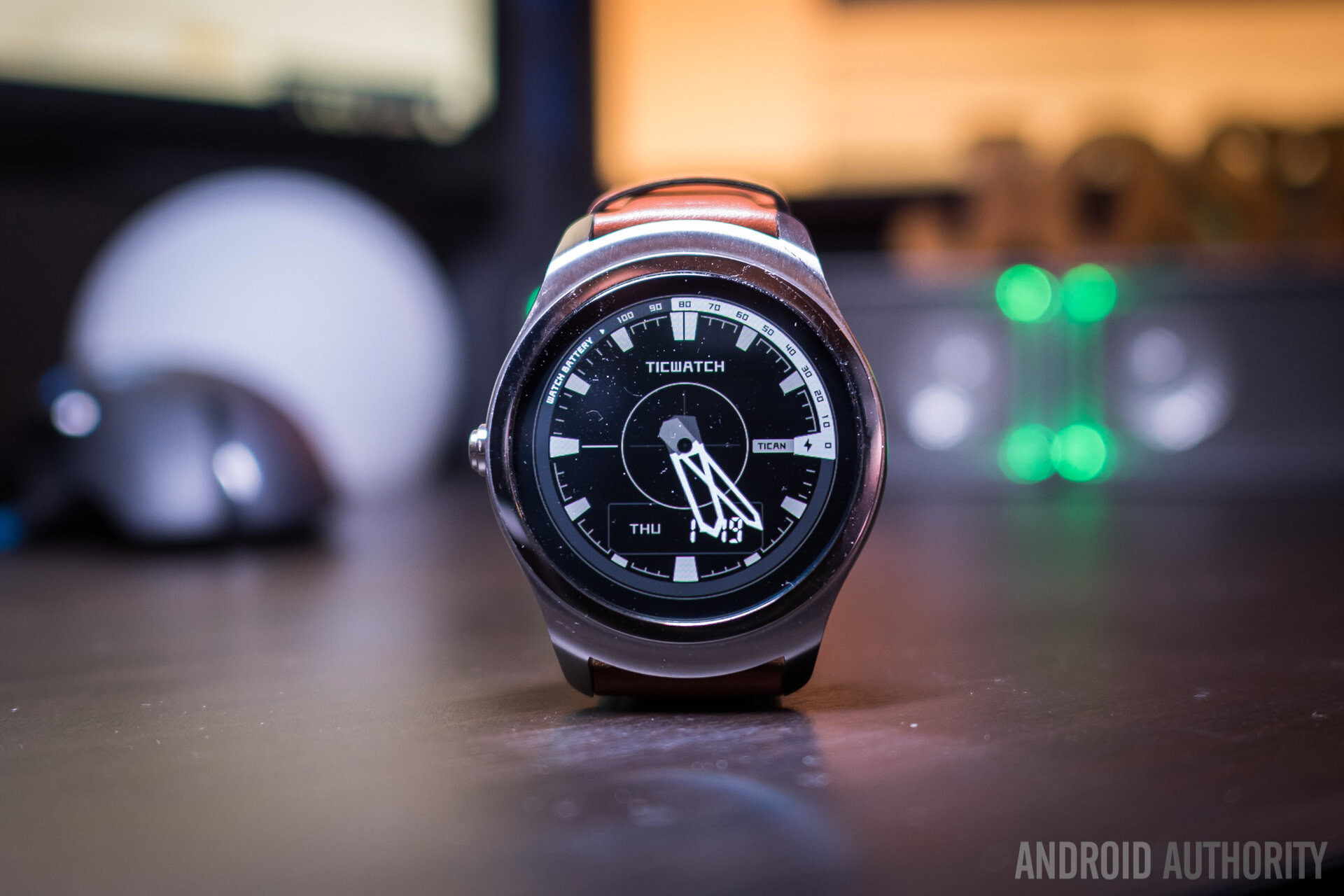
As mentioned before, the 1.4 inch OLED display mostly makes up the size of the Ticwatch 2. It comes in 400×400 resolution, which is plenty for a smartwatch and provides good sharpness for all the text you’re inevitably going to read on it. We’ve had very few issues with the display in bright daylight, too. The Ambient Display mode is nice, making watchfaces go into a lower state that is still readable and useful. The only problem with it is the hit it makes on battery life.
That battery life is based on a 300mAh unit that is a little paltry compared to some higher spec smartwatches we’ve seen this year. The result is a watch that can go for a day and a half if Ambient Display is turned off and notifications are kept at a minimum, like with Do Not Disturb or Airplane modes activated. That is a bit of a bummer but not something that we are totally surprised by considering the price of the Ticwatch 2.
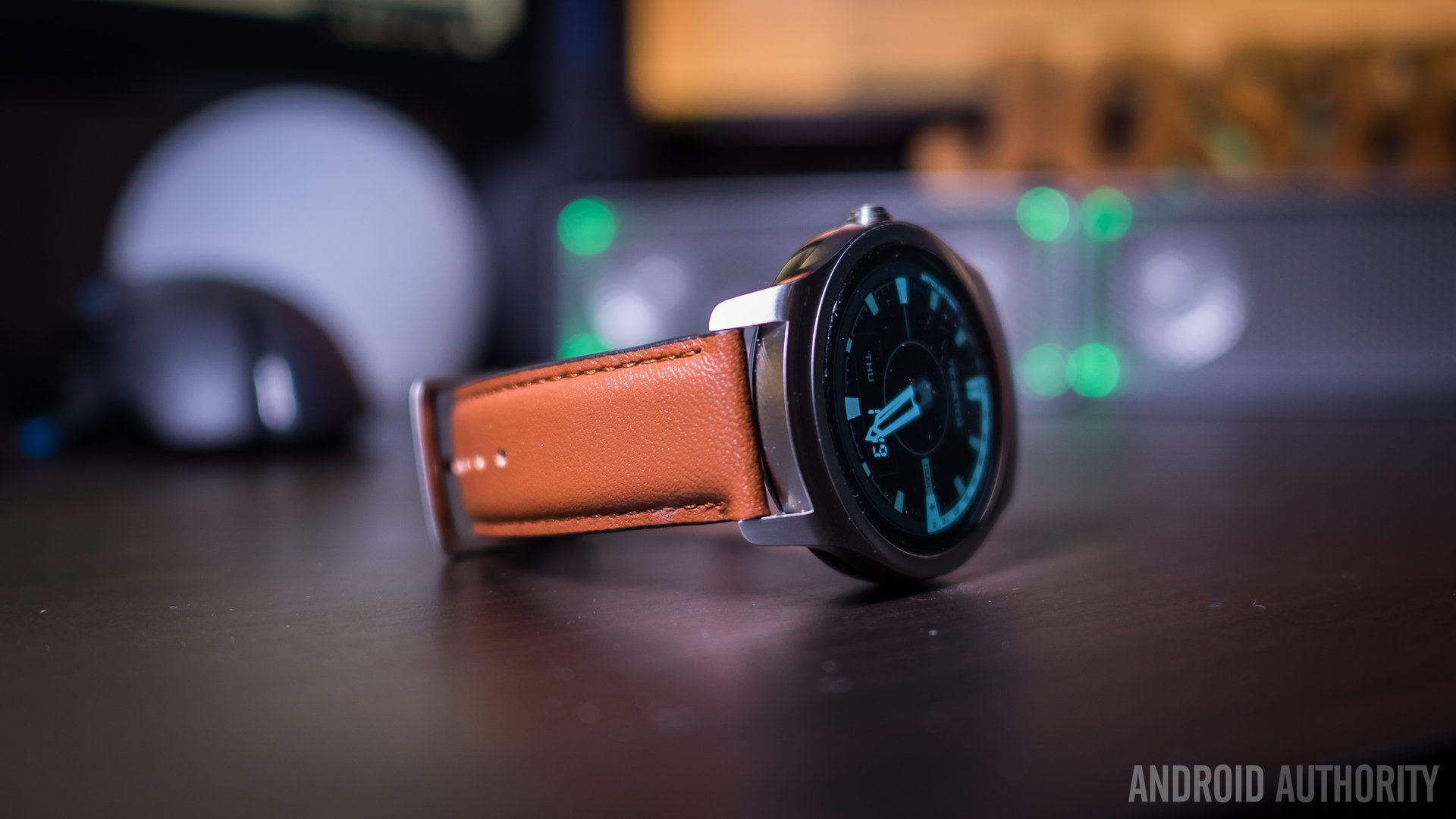
Performance, on the other hand, has been reliable and smooth. Though it doesn’t have the unabashed snappiness and low touch latency of devices like the Samsung Gear S3, there is really little to complain about when it comes to notifications and navigation, especially when the touch-sensitive side works well. There is the matter of the low amount of apps in the Ticwatch ecosystem – the lack of extra applications means that users won’t be installing a lot on the watch and thus potentially overloading it. This is something that we can only test as the Ticwatch gets more developer support.
One surprise for users might be the extras that are installed in this device, like the 4GB of storage that can be used for mainly playing local music files and listening to them via Bluetooth headphones connected straight to the Ticwatch. GPS is available for use in mainly the fitness tracking applications, and it works in conjunction with the pedometer and the heart rate sensor to provide information during and after workouts.
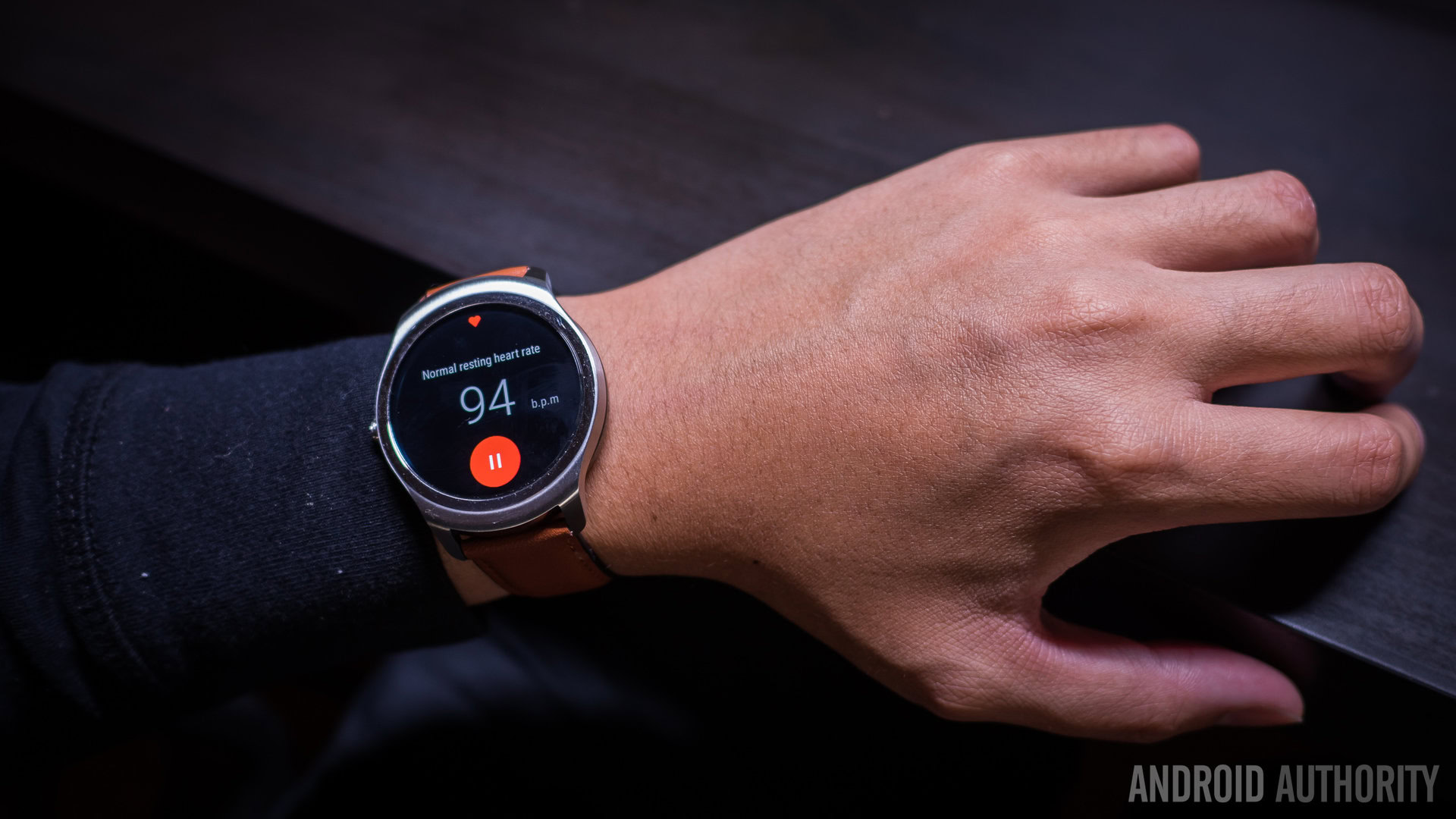
Even more rare to find at this price bracket is a microphone/speaker combo – this is, indeed, one of the only smartwatches I have ever used that uses notification sounds on top of the vibration feedback that is normally relied upon. Getting that audible ding from my wrist was a different experience, and though I think it’s nice to have, switching to vibration-only mode happened fairly quickly.
The combo is also useful for taking calls on the watch – yes, you can take calls on the Ticwatch 2, a sub $200 wearable! With the audio coming through the Bluetooth connection, the dialer app just pulls recent calls and gives a full number pad. The quality of the calls is good enough, considering the small speaker that is on the Ticwatch – we expect that if you have your phone nearby, you would just be reaching for it anyway, but in a pinch it can prove to be a useful feature. The sound could use a bump up, as I felt like I had to yell at my wrist, despite my voice coming in pretty clear on the other end.
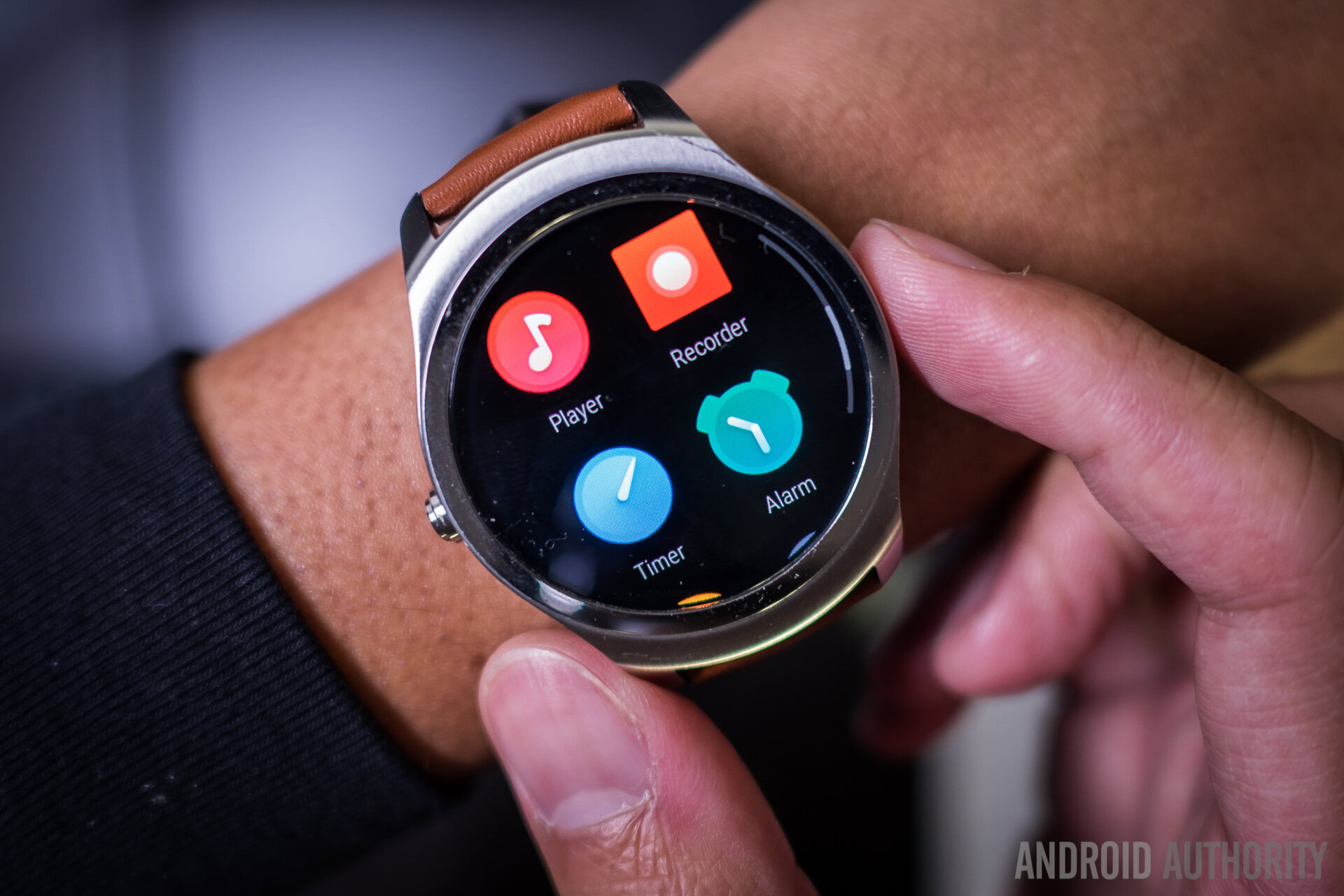
And finally, the software, which is a full version of Android morphed into what is called Ticwear. The app in the Play Store is simple enough to set up, as the watch connects to the phone just like any other smartwatch. Once connected, Ticwear provides a good hub for changing the different settings and features of the watch, but all that the user can do in the app is limited by the very low amount of watchapps currently avaialble. Ticwear is a very young ecosystem, and though there are a few to choose from in the Mobvoi Store, the only additions that we’ve seen since getting the watch are more watchfaces. Without app developer support, the Ticwatch 2 is more or less a capable notification hub that happens to take calls.
Speaking of notifications, they are all bundled together in the watch via a swipe up from the watchface, where they are lined up much like they would be in a regular Android iteration. Actions and responses on these notifications are similar to Android Wear – canned responses or voice dictation are the main methods of response. Quick settings are available via a swipe down and getting to either the voice control or the installed apps requires swipes from the left or right, respectively.
Though we would love to see more development in the Ticwear ecosystem, we don’t think it hinders the core experience of the Ticwatch 2 that much. It manages to get the basics down pretty well, with many of the features that you’d expect in a premium wearable coming at an affordable price. There are even a couple of surprising additions like the built-in ability to take calls and get notification sounds on top of vibrations. For those reasons, we think that the Ticwatch 2 is a very worthy selection for anyone looking for either their first functional smartwatch or an alternative to the Android Wear devices that we see all the time. For what it’s worth, Ticwear works on iOS as well, making this one of the only cross platform smartwatches you can get today.
The Ticwatch 2 does a great job of providing much to users who want to spend little
And all that comes in at a starting price of $179, for the base Charcoal edition. This Oak version is priced at $249.99, though the price is a little lower on Amazon and looks to be staying that way. With all its features to boast, the Ticwatch 2 does a great job of providing much to users who want to spend little. It isn’t the best smartwatch we’ve used mainly because of its lack of developer support, but what it manages to do for the core functions that users want puts it pretty high up in our list of wearables that you should consider. If you are looking for a new smartwatch in the new year, you might want to take a good look at the Ticwatch 2.